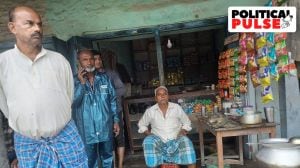Heavy metal
Chhattisgarh is seeing a rush like never before. In the last six months the state has cleared an investment of Rs 13,019 crore—more tha...

Chhattisgarh is seeing a rush like never before. In the last six months the state has cleared an investment of Rs 13,019 crore—more than 70 per cent of this is in the iron and steel sector.
Encouraged by the possible entry of the country’s biggest players—the Tatas, Essar, Ispat and Jindal Vijaynagar, the state has announced its intention to double steel production to 20 million tonne by 2012. The Bhilai Steel Plant (BSP) which made a profit of Rs 2,500 crore this year alone, contributes 5 million tonne of steel and has plans to double its capacity.
The Tatas plan to set up a Rs 10,000 crore steel plant. ‘‘If the Tata proposal gets through, Chhattisgarh will get a plant with a potential equal to the Bhilai one,’’ says M.K. Pandey, nodal officer in the Chhattisgarh State Investment Promotion Board.
The state produces about 10 million tonne of sponge iron (an intermediate product used in steel production) and steel. Its production of sponge iron accounts for 30 per cent of India’s total share.
Since August 2004, the government has signed 39 MOUs with 95 investors. Of these, MoUs worth Rs 9,424 crore were signed in January alone and key players include Jindal steel and power—Chhattisgarh’s biggest private investor in the steel sector with a Rs 8,000 crore expansion plan. Says Naveen Jindal, executive vice-chairman and MD of Jindal Steel and Power: ‘‘Signing of MoUs is no great achievement. The real test lies in implementation.’’
At present, all MoUs have translated into work on ground—except Bhushan Steel which pulled out from the state and set up its plant in Orissa.
THE state’s investment drive started in 2001 when after opposing BALCO’s disinvestment, then chief minister Ajit Jogi went metro hopping, trying to convince all that he was not opposed to investments. His government signed MoUs for more than Rs 16,272 crore with 19 investors.
BUT for the state’s residents it is getting too crowded for comfort. ‘‘Every day I wake up to find a new investor at my door with a proposal for a iron or steel plant. The rush is unavoidable but I am trying to shift the focus on other sectors like herbal units and downstream industries including cycle and auto-spare parts. Too much of sponge iron and steel is not good for the state’s health,’’ says chief minister Raman Singh.
His fears are not unfounded. Already there is opposition in the villages close to the new iron unit sites. At Chourenga in Raipur district, a newly commissioned Rs 18-crore sponge iron has been idle for the past eight months. Villagers have not allowed its owner Pradeep Aggarwal to start production since they fear the plant would pollute the environment, harm their crops and affect their health. Last week, Agarwal went to the High Court.
Villagers are also protesting the setting up of three other plants in Raipur. In Raigarh—Chhattisgarh’s industrial belt bordering Orissa and Jharkhand, the Jindal group has not been able to move its Rs 2,595 crore expansion project. Says Shivraj Singh, the state’s principal secretary (industry and mines): ‘‘These are isolated cases and will not affect our investment drive. The government is making an effort to strike a balance between the concerns of villagers and the interests of investors.’’
Increasingly, it’s becoming difficult for the state to find the right balance.



- 01
- 02
- 03
- 04
- 05




























